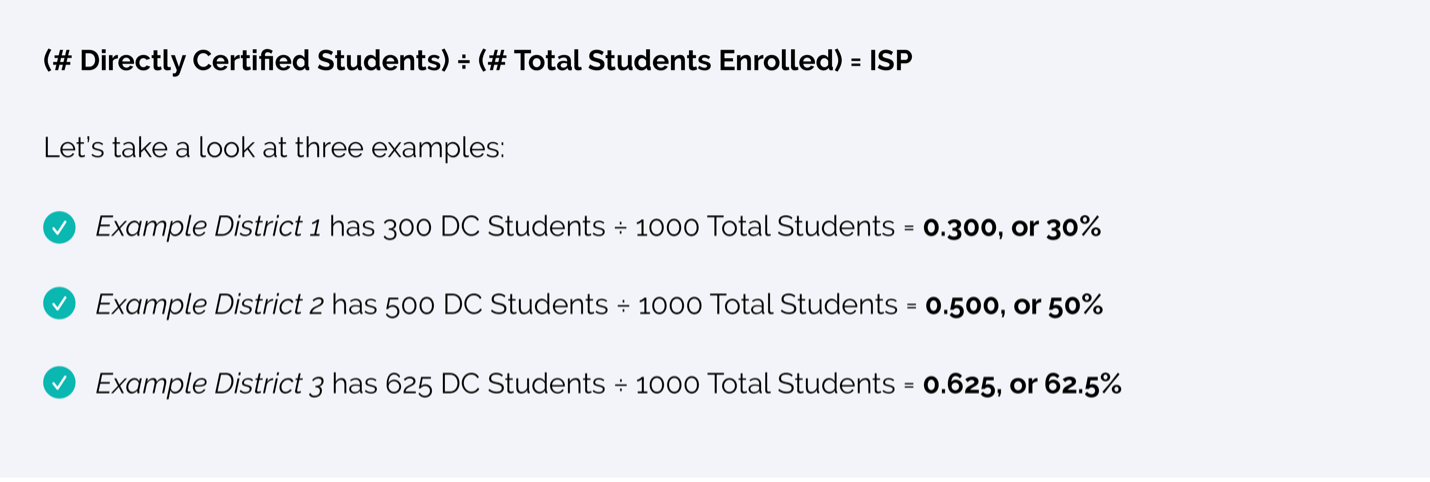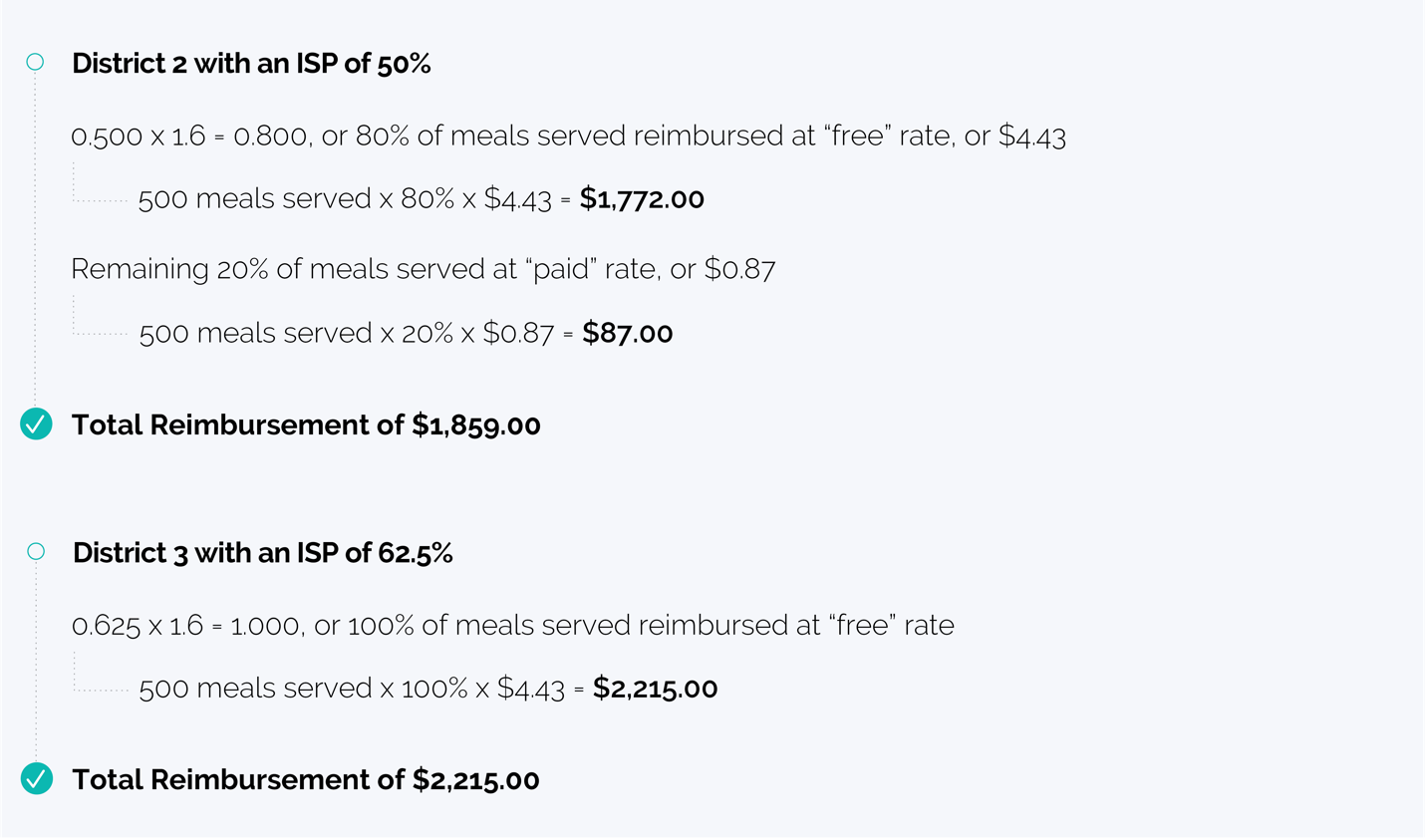Community Eligibility Provision (CEP) is often misinterpreted in simplicity to mean “free meals for all students.” When parents, administration, and board members catch wind of this program, the questions start pouring into the school nutrition professionals, “Why aren’t we on this program?”
We at i3 Education are here to provide this high-level overview of this non-pricing meal service option for schools and districts in low-income areas, and if it might be a viable option for your district.
What is CEP?
This federally funded program allows high-poverty schools and districts to serve breakfast and lunch at no cost to all students, regardless of individual household income, without needing to collect household free and reduced meal applications. Instead, program eligibility is met through a minimum percentage of that district’s Direct Certification (DC), not to be confused with the percentage of free and reduced students within a district. As a refresher, DC is a method to automatically qualify students for free or reduced meals using data from Family and Social Services Administration (SNAP, TANF, and Medicaid) and Department of Child Services (Foster) and matching that with the Local Educational Agency’s reported enrollment. Direct Certified households do not need to complete a meal application and will not be included in the verification process because their eligibility has already been verified.
How is CEP Calculated?
The first step is determining your district’s Identified Student Percentage (ISP), which is the percentage of your student body that is Directly Certified between April 1st of the prior school year to the current date. The calculation is as follows:
The minimum ISP for CEP participation is 40%. In the above examples, District 1 is not eligible under current guidelines, while Districts 2 and 3 both meet the eligibility criteria to participate in CEP.
My District is Eligible. What’s Next?
Let’s examine the difference in reimbursement for Districts 2 and 3 if they were to enroll in CEP. It’s important to note that even though both qualify for CEP and have identical total enrollment, reimbursement will be different.
A district’s ISP is multiplied by a factor of 1.6 to determine the percentage of meals served that are reimbursed at the free rate. This 1.6 factor is based on a statistical determination that for every 10 students that were Directly Certified, approximately six additional students would qualify for free meals based on household income applications, which are not collected under CEP. The remaining percentage is reimbursed at the paid rate. All CEP programs are reimbursed at the “60% or More” rate, which for 2022-23 is $2.67 for breakfast and $4.35 for lunch at “free,” and $0.50 for breakfast and $0.79 for lunch at “paid.” The additional $0.08 performance-based rate is based on the individual district.
To continue with our examples, suppose each district serves 500 lunches on a given day. We’ll assume both districts qualify for the performance-based reimbursement rates of $4.43 for “free” and $0.87 for “paid.” Reimbursement for that meal service would be as follows:
Let’s take it further and forecast the difference in one full school year. To do this, we’ll assume a 30% participation for breakfast (300 breakfasts served daily) and stick with the 50% participation for lunch (500 lunches served daily). Presuming 180 active days in a school year, that’s 54,000 breakfasts and 90,000 lunches served for the school year for each district.
In quick summary, there’s an $87,526 difference in annual reimbursement comparing two districts with identical enrollment, both participating in CEP, and serving an equal number of meals. This difference all lies with that ISP calculation.
Financial Viability
Based on the examples, it’s evident that there’s a substantial reimbursement difference for CEP participants based on their ISP, even when serving identical numbers of meals, which could be assumed to carry similar expenses in food, labor, etc. Every school district is different and should complete the necessary calculations to determine if community eligibility is viable. Financial analysis should be vital in deciding if meals can be provided at no charge to all students while maintaining the financial integrity of the district’s nutrition program budget. The USDA has published the Community Eligibility Provision (CEP) Monthly Federal Reimbursement Estimator, an online tool that can aid districts in determining CEP viability. Districts might also wish to visit the Food Research & Action Center’s interactive tool, State Lists of Schools That Can Adopt Community Eligibility for SY 2022 – 2023.
Proposed Changes to CEP
Since the pandemic started in March 2020, the National School Lunch Program (NSLP) has seen countless waivers to ease the burden of school nutrition professionals and increase the accessibility of healthy breakfasts and lunches to students. As a product of the Build Back Better Act, several changes are being proposed to CEP, mainly a decrease in minimum ISP from 40% to 25% and an increase in the multiplying factor from 1.6 to 2.5.
A reduction in ISP would allow for expanded participation. Still, given the examples described above, there is potential for a broader discrepancy in total reimbursement between districts with similar meal production and expenses. Furthermore, while the increase in the multiplying factor is a welcomed change, it is only guaranteed at that increased rate for CEP participants for five years, as currently written in the proposals.
Conclusion
Accurate tracking of ISP and participation is critical, and i3 Education is an excellent addition for any district to track direct certification, disclosures, and income surveys, should you choose to participate in the program. If you decide CEP is not currently viable for your district, the information above is a great tool to share with your district and community as insight into the program.




